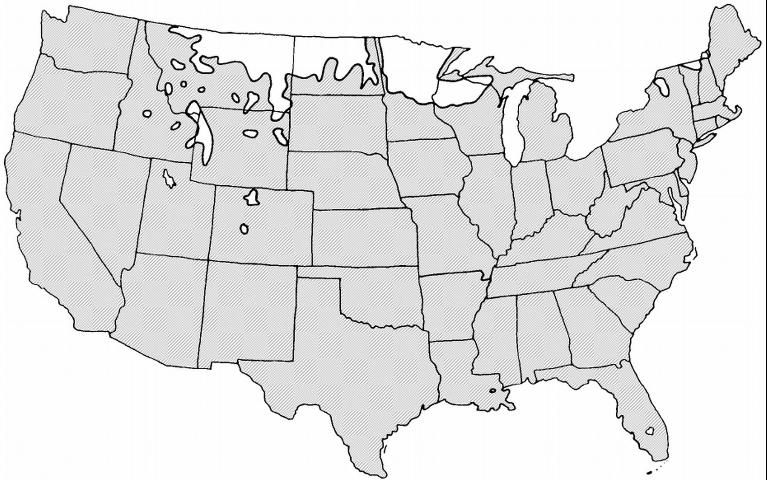Introduction
Pansy is a biennial grown as an annual. There are numerous varieties with brightly colored flowers both with and without the characteristic "face" or blotch. Pansy performs best during the cool days of spring and fall, and will grow and flower all winter in USDA hardiness zones 8 through 11. The plants need some shade and lots of moisture during hot weather and are not suitable for the summer in USDA hardiness zones 8 through 11.
General Information
Scientific name: Viola x wittrockiana
Pronunciation: vye-OH-luh wit-rock-kee-AY-nuh
Common name(s): pansy
Family: Violaceae
Plant type: herbaceous; annual
USDA hardiness zones: all zones (Fig. 1)
Planting month for zone 7: Mar; Apr
Planting month for zone 8: Feb; Oct; Nov; Dec
Planting month for zone 9: Feb; Nov; Dec
Planting month for zone 10 and 11: Nov; Dec
Origin: not native to North America
Uses: container or above-ground planter; edging; cut flowers; border
Availability: generally available in many areas within its hardiness range

Description
Height: .5 to 1 feet
Spread: .5 to 1 feet
Plant habit: round; spreading
Plant density: open
Growth rate: slow
Texture: medium
Foliage
Leaf arrangement: alternate
Leaf type: simple
Leaf margin: dentate
Leaf shape: ovate; oblong
Leaf venation: not applicable
Leaf type and persistence: not applicable
Leaf blade length: less than 2 inches
Leaf color: green
Fall color: not applicable
Fall characteristic: not applicable
Flower
Flower color: yellow; white; blue; pink; purple; orange; lavender; rust or bronze; black
Flower characteristic: showy
Fruit
Fruit shape: no fruit
Fruit length: no fruit
Fruit cover: no fruit
Fruit color: not applicable
Fruit characteristic: inconspicuous and not showy
Trunk and Branches
Trunk/bark/branches: not applicable
Current year stem/twig color: green
Current year stem/twig thickness: thin
Culture
Light requirement: plant grows in part shade/part sun
Soil tolerances: clay; sand; acidic; loam
Soil salt tolerances: unknown
Plant spacing: 6 to 12 inches
Other
Roots: not applicable
Winter interest: not applicable
Outstanding plant: not particularly outstanding
Invasive potential: not known to be invasive
Pest resistance: long-term health usually not affected by pests
Use and Management
A rich soil and ample moisture are needed for the production of large flowers. Keep plants in bloom by removing old flowers before seed is formed. Fertilize during the growing season. Occasionally plants will survive the winter in sheltered locations north of hardiness zone 8. The plants grow six to ten inches high and are spaced six to eight inches apart.
Pansy is propagated by seed or cuttings. Cuttings can be taken and rooted in the fall. Seed may be planted in spring or fall. The seed germinates in 10 to 14 days at temperatures between 65 and 75°F. Cover the seed to exclude light. Seedlings are killed by too much sun. In Florida, pansy is planted October through January or February, depending on location.
There are many, many cultivars developed for flower color, face size and color, and plant height.
Pests and Diseases
Aphids suck plant juices and coat the leaves with sticky honeydew.
Cutworms eat the foliage.
Violet gall midge larva attacks the leaves at the growing point, causing a gall to form. The distorted leaves are subject to wet rot. Infected plants are dwarfed and produce few blooms. Remove and destroy infested leaves.
Greenhouse leaf tier webs the flower buds and leaves together.
Violet sawfly larvae skeletonize the leaves and then eat them. The larva is bluish black and one-half-inch long.
Slugs will feed on the foliage but can be controlled with baits.
Mites cause loss of green color.
Anthracnose causes browning and blotching of the leaves. The dead areas have distinct black margins. The petals of infected flowers are abnormal or spotted. Severely infected plants may be killed.
Several leaf spots may be seen and are controlled by picking off infected leaves.
Powdery mildew causes a white powdery growth on the leaves.
The disease called scab is also called spot anthracnose or pansy scab. Symptoms are circular to elongated lesions, one fourth inch in diameter, on all parts of the plant. The spots may be yellowish brown, rose colored, or whitish. Darker green zones may surround the spot. The diseased areas fall out, giving a shothole appearance. The spots may change from irregular to elongated raised scabs on the leaves and stems. When the stems or leaf stalks are girdled, the part above the infection dies. Remove and burn old leaves.
Stem rot attacks the stems at soil level. Diseased tissue becomes black and brittle and contains an abundance of black spore pustules. Infected leaves turn purplish black in spots or streaks. Infected tissues dry up, shrivel, and turn brown.
Rust causes pale green spots on the undersides of leaves. Pustules containing yellowish spores develop on the upper leaf surface. Spots may develop on petioles and stems.
Smut attacks all parts of the plants. Elongated or callus-like pustules develop on the leaf stalks, deforming them. The pustules break open to discharge spore balls. Remove and destroy infected plants early in the season.